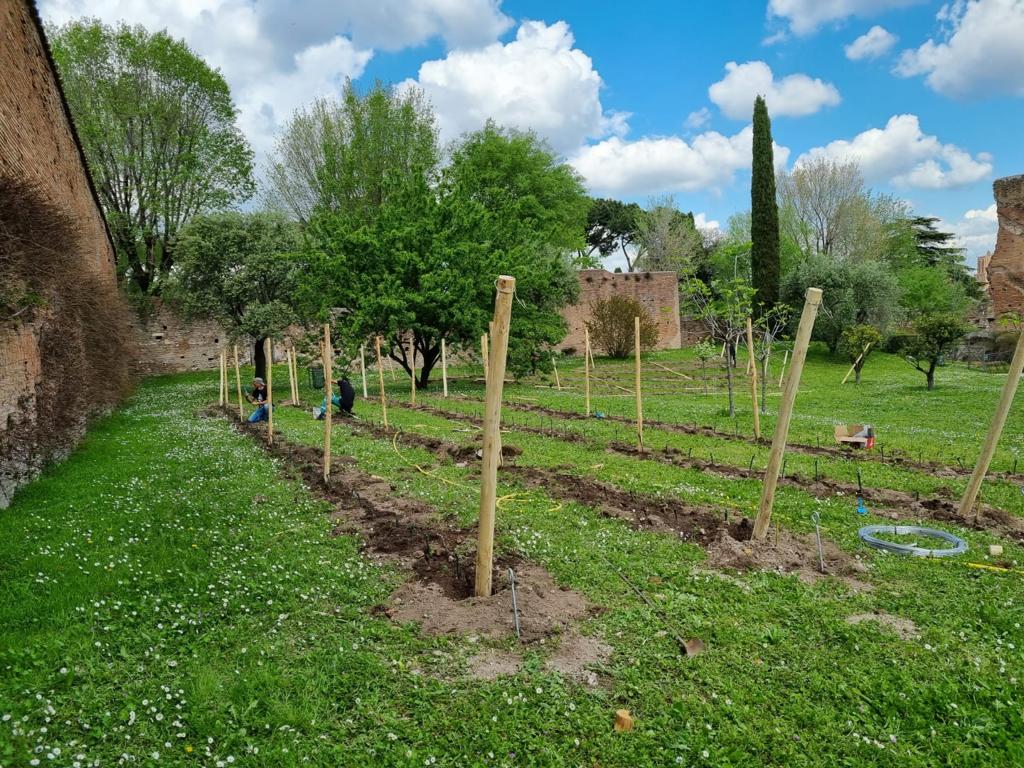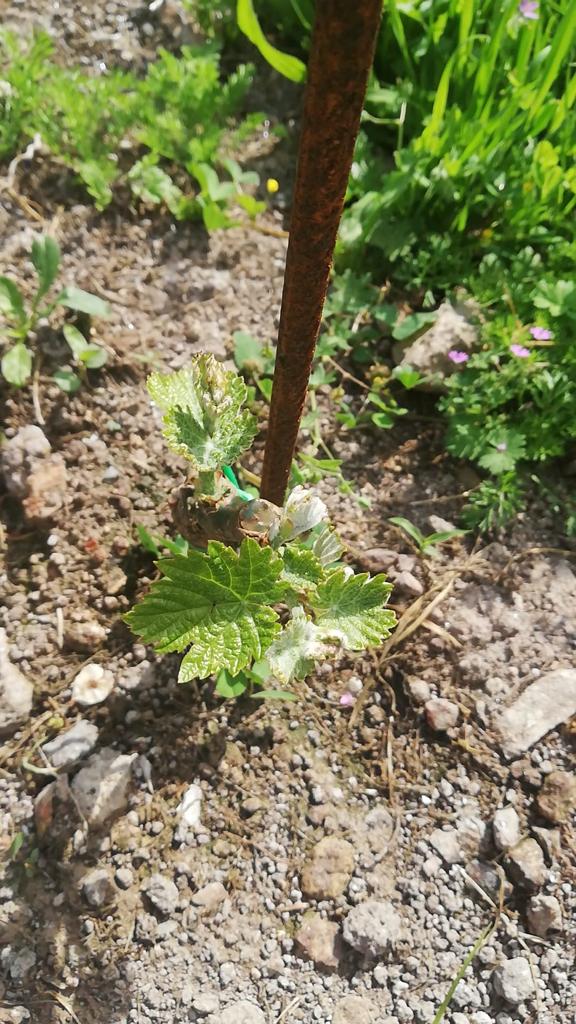With a sponsorship agreement, Colosseum Archaeological Park and Cincinnato winery become technical partners in the project to plant a small vineyard on the Palatine Hill
Agriculture, considered “the Roman citizen’s most morally worthy activity”, was constituted even in ancient times by “Ficus, Olea et Vitis”. Rooted cuttings of Bellone variety were planted in April 2021 as a celebration of the cultural and ethical significance of farming the land, and its ancient historical and environmental bond with the area covered by Colosseum Archaeological Park

The Colosseum Archaeological Park authority has commissioned a small vineyard to be planted on the Palatine Hill, signing a technical sponsorship agreement with its partner, Cincinnato winery. The winery expressed its interest in developing another important project to promote the park’s cultural and ethical bond with the farming roots of Roman civilization. A bond still honoured oposite the Roman Curia by the three types of plant mentioned in ancient sources. The truly fundamental importance attributed to farming was already quite clearly seen in the area, to the point that Colosseum Archaeological Park activated the “PArCo Green” scheme some while ago. The scheme envisages a series of activities that focus attention on the role of the biodiversity treasures found in the park’s 40 hectares.
An incredible wealth of fauna and flora is concentrated here, inspiring projects such as “L’olio del PArCo” (production is already under way of “Palatinum” EVO from 189 olive trees, in conjunction with Coldiretti and OP Latium), and “GRABees” (installation of hives in conjunction with the Promozione Sociale Comitato Mura Latine association to produce “Ambrosia del Palatino” honey). Moreover, the Park teems with historical and archaeological traces that highlight the importance of agriculture, with a toponymy that defines various areas as “vigna” in the broader sense of the term “vine”, indicating mixed cultivation, but with a documented presence of vineyards. The most striking is “Vigna Barberini”, which takes its name from the Roman family that owned the area in the 1600s, already planted with fruit trees – first of all the “ficus ruminalis” linked to the origins of Rome – that will encircle the newly planted vineyard.
The idea of having grapes flourish on the Palatine Hill is therefore part of the promotion of its historical landscape as a cultural value that enhances the beauty of Colosseum Archaeological Park, which also becomes a “nature park”. A harmonious coexistence of spontaneous vegetation and large trees planted in recent centuries pursues the aim of restoring to their former glory the imperial gardens and the Renaissance-period Horti Farnesiani, which were a beauty spot on the ancient hilltop at various times in history.
Nazzareno Milita, the winery president explained: “We named our winery Cincinnato in honour of the famous Roman politician. When he retired from his government post, he returned to his farm, which was in Cori, precisely where our winery and our growers’ vineyards are located, just 60km from Rome. We enjoy an enduring bond with Rome and the civilization it represents, in particular with its agricultural origins. So we jumped at the chance to become a Colosseum Archaeological Park partner in a scheme as prestigious as this. Moreover, we are also closely linked by the presence on both sites of temples dedicated to Castor and Pollux, the Dioscuri, after whom we have named our two most popular wines. For us, cultivating Bellone on the Palatine Hill means not only producing wine – although we will strive to do that too and to the best of our ability – but above all culture. We’ve always talked about the importance of the vine in Italian history since Roman times. From today not only will we be talking about it, we’ll give people the chance to see – even touch – the golden shoots and bunches as they ripen in a unique context of unrivalled beauty. Right in the heart of the Eternal City. This fills us with pride but we also know it’s a responsibility. We like to think that through a small vineyard millions of visitors from all over the world will go home having seen with their own eyes why Italy is so deeply immersed in wine production. A bond that legend traces back to the Roman legionaries who carried not only weapons but also rooted cuttings, thus taking winegrowing culture all over Europe and then worldwide.”
“From a technical point of view,” adds Cincinnato’s marketing manager Giovanna Trisorio, “we’re delighted that Bellone was the choice as it is the most typifying variety of our white grapes. We actually produce six varieties, also used for sparkling wines and passito, while Nero Buono, originally from Cori, is our standard bearer red grape. We will work manually to impact the area as little as possible, struts are in chestnut, organic methods are applied, and no irrigation system is required. The concept is inspired by early–twentieth-century methods and aims above all to create culture and share knowledge.”
The director of Colosseum Archaeological Park, Alfonsina Russo, defines it an “ethical operation”, which “aims to develop a public awareness of culture, but is also educational as it will schedule a series of workshops, visits and tastings for park visitors.”
The park’s landscape architect, Gabriella Strano, also points out that: “Vigna Barberini” is the perfect location in the park without the risk of interfering with archaeological structures. Indeed, the area has been enriched with soil removed during excavations to bring to light the neighbouring temple of Heliogabalus, thus raising the height of the surrounding land.
The entire Palatine Hill, as is well documented by archaeological investigations and historical maps, in the late Middle Ages and later with the decline of the Orti Farnesiani, was used for farming. Its slopes were planted with vegetable gardens called “vigne”, cultivating fruit trees and vegetables as well as vines. The decision to plant rooted Bellone cuttings was inspired by Pliny the Elder’s Naturalis Historia, in which he discusses the “Pantastica” grape, an ancient native Lazio vine and the ancestor of Bellone (also known as Cacchione).
In three years time, the Palatine Hill will be ready to harvest but the wine made will not be a commercial product intended for sale. Instead it will embody the ethical and innovative value of the Colosseum Archaeological Park project, conveying its most profound values in a “liquid” and fragrant guise.

COLOSSEUM ARCHAEOLOGICAL PARK
Colosseum Archaeological Park was established with Decree No. 15 of 12 January 2017. The park is tasked with the safeguarding of areas and monuments pertaining directly to the Italian state (Colosseum, Domus Aurea, Arch of Constantine and Meta Sudans, Roman Forum and Palatine Hill), and to Roma Capitale administration (Circus Maximus, Imperial Forums), as well as the rich ecclesiastical heritage of the churches that stand along Via dei Fori Imperiali, the Palatine Hill and its slopes. The declared mission of Colosseum Archaeological Park is ongoing teaching of memory and is also expressed in the relationship with an extremely varied type of visitor as well as a commitment to establish a continuous relationship with the new generations, handing down the city’s historical roots in the future also by connecting with Rome’s entire cultural system. To achieve these aims, the park is committed to the protection, conservation, research and promotion of its archaeological, monumental and landscape heritage. The effort to share knowledge of these places with the general public also makes use of new digital technologies that communicate by applying a more user-friendly and immediate approach to the park’s complex reality.
www.parcocolosseo.it/parco-green/

CINCINNATO
Established in 1947, Cincinnato is a leading Lazio wine cooperative. In the mid–1990s it chose to focus on quality and the promotion of native vines. A direction that projected it into the future but certainly went against prevailing trends of the time, when international vines were definitely preferred. Today it has 105 members who represent a total of 550 hectares of vineyards and olive groves, all in the Cori DOC zone, in a municipality found in the Lepini mountains, in the province of Latina, about 60km south of Rome. The highlights of the cooperative’s history after its foundation are certainly the construction of state-of-the-art cellars in 1979 and the start of the aforementioned quality project in 2001, to recover and enhance heirloom native Nero Buono and Bellone grape varieties.






